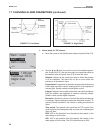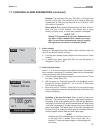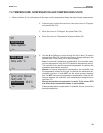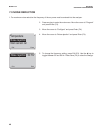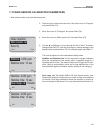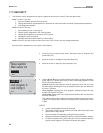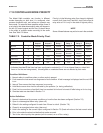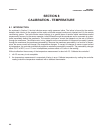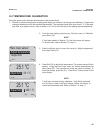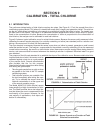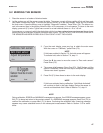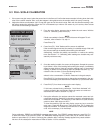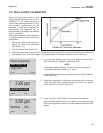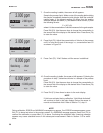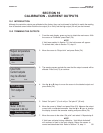
44
MODEL TCL SECTION 8
CALIBRATION - TEMPERATURE
SECTION 8
CALIBRATION - TEMPERATURE
8.1 INTRODUCTION
As explained in Section 2, the total chlorine sensor really measures iodine. The iodine is formed by the reaction
between total chlorine in the sample and the acetic acid/iodide reagent continuously injected into it by the sample
conditioning system. The total chlorine sensor belongs to a general class of sensors called membrane-covered
amperometric sensors. As the sensor operates, iodine diffuses through the membrane and is consumed at an elec-
trode immediately behind the membrane. The reaction produces a current that depends on the rate of diffusion
through the membrane. The diffusion rate, in turn, depends on the concentration of iodine and how easily it passes
through the membrane (the membrane permeability). Because the membrane permeability is a function of temper-
ature, the sensor current will change if the temperature changes. To correct for changes in sensor current caused
by temperature, the controller automatically applies a membrane permeability correction. The permeability changes
about 3%/°C at 25°C, so a 1°C error in temperature produces about a 3% error in the reading.
Without calibration the accuracy of the temperature measurement is about ±0.4°C. Calibrate the controller if
1. ±0.4°C accuracy is not acceptable
2. the temperature measurement is suspected of being in error. Calibrate temperature by making the controller
reading match the temperature measured with a standard thermometer.



